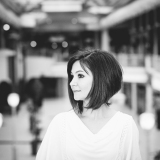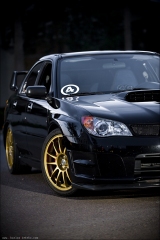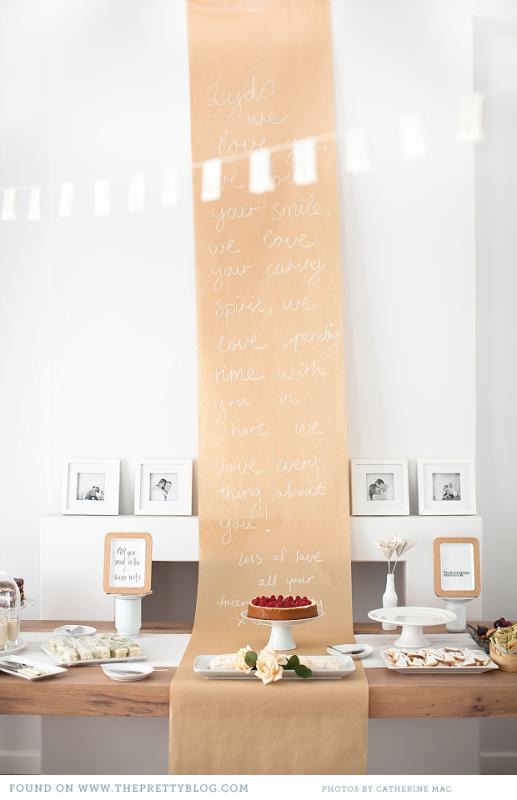- Forum
- Photography and Camera Forum
- Taking the Photo | Editing | The art of Photography!
- Editing and Presentation
- How can I get my photos to look like this when shot indoors
How can I get my photos to look like this when shot indoors
-
 Topic Author
Topic Author
- Jeannie_Cee
- New Kid On The Block
- Canon 5D MK II and III
- Followers: 10
- Posts: 13
-
Points:
0
-

- john_m
- Master of the Lens
-
- Nikon D200
- Followers: 55
- Posts: 1563
-
Points:
0
Post #220499
Nikon D200
Nikon 50mm f1.8D, Tokina 28-80 f2.8, Nikon 75-300, Sigma 18-200, Nikon SB-600, Nikon SB-25, Promaster triggers
Post #220506
Also, if your indoor photos look orange, it means the white balance is not right. If you shoot raw you can fix it in post processing, but if you shoot jpeg you need to get it right when you take the picture. Most people leave it set at "AWB" which is hit or miss. For indoor shots you want one of the lightbulbs, depending on the type of lighting in the room.
-Matt
-

- KCook
- Photo Elder
-
- Canon EOS 50D and Olympus E-P5
- Followers: 1325
- Posts: 5410
-
Points:
32913
Post #220517
thepioneerwoman.com/photography/2008/11/...ason-i-shoot-in-raw/
www.picturecorrect.com/tips/what-is-white-balance/
mansurovs.com/what-is-white-balance
Kelly Cook
-

- Henry Peach
- Apprentice
-
- I currently use a 5DII or Sony Nex-3 most of the time.
- Followers: 50
- Posts: 2925
-
Points:
16
Post #220838
As said the orange is a white balance issue. The tungsten wb setting on the camera is for tungsten photoflood bulbs not household tungsten bulbs. Photoflood bulbs are so bright they heat up a room pretty quick, and might give the subjects a tan. Household bulbs are even more orange. With my DSLRs auto-wb rarely goes blue enough to eliminate the orange from household bulbs. Either set a custom wb at the scene, or adjust in processing.
My favorite trick for dealing with icky color I can't seem to correct is to go BW.
Using a flash can help. Flash light is white, and over powers the local orange lighting. At least your closer subjects are more normal colored, and there is a warm glow in the background. Bounce the flash off the ceiling, and it looks like regular room lighting (or even softer).
For indoor wedding receptions I put an orange gel on my flash, and aim it at the ceiling with a homemade bounce card on the back. I set the wb to tungsten and I'm shooting raw. This makes the flash light a similar color as the tungsten room lights, and when I correct in the raw processor foreground and background all look a more natural color.
-

- john_m
- Master of the Lens
-
- Nikon D200
- Followers: 55
- Posts: 1563
-
Points:
0
-

- FedererPhoto
- Newbie
- Followers: 9
-
Points:
0
Post #220860
Different light has different color. Daylight tends to skew blue, tungsten tends to skew orange, flourescent tends to skew green, dusk/night/shadow tends to skew blue, etc... our eyes/brain compensate for this and we see white as white as white until things get pretty crazy (and even then our brain tends to do well). But our camera doesn't know anything other than what you tell it. You need to tell it "Hey, I'm shooting in tungsten lighting right now" for it to make the compensation our brains make automatically.
By maniupulating the various colors of light, you can get things to 'match' or you can get things to contrast. Light from a flash is historically matched to sunlight by default... As Henry said, you can put a orange-colored gel (which is really just a piece of celophane-looking stuff that's tinted) in front of your flash... this will make both the ambient light (tungsten) and the flash-based light (which has been gelled to match the tungsten) the same color. Then you can tell your camera, "This room is lit with orange light".... and your camera will skew everything such that whites come out white and the colors will all match nicely.
The opposite approach can also add contrast and highlight a particular part of a scene. The second-to-last image in this engagement photograph session blog post shows this effect. The water was trending bluish as the dusk wore on (it was pretty dark for this shot - 1/2" shutter, f/2.
Learning the different color temperatures of light will help in being able to effectively work with indoor light (where mixed sources are very common and 'auto white balance' tends to no do very well)
- Forum
- Photography and Camera Forum
- Taking the Photo | Editing | The art of Photography!
- Editing and Presentation
- How can I get my photos to look like this when shot indoors
Latest Reviews
The Canon EOS R100 is an entry-level mirrorless camera introduced in 2023. But just because it’s an entry-level camera doesn’t mean it’s a bare-bones camera. Find out why in this review!
Nikon’s retro-looking Nikon Zfc is anything but retro. Under its classic body is a host of features and amenities that make it a worthwhile compact mirrorless camera for 2024.
The Canon EOS R50 is one of the newest R-system cameras from Canon. Is it worth your money? Find out all the details you need to know in this comprehensive review.
The Sony FE 70-200mm f/2.8 GM OSS II is Sony’s flagship mirrorless zoom lens. As such, it’s loaded with features and has a top-shelf build quality that makes it a top pick!
Forum Top Posters
-
1alexcray 2 posts
-
2nijolcreat... 1 post
-
3Esseff 1 post
-
4db3348 1 post
-
5Fitch 1 post
-
6Sean Lamber 1 post
Latest Articles
Creating impactful photos of landscapes depends on many factors, not the least of which is your talent behind the lens. This guide explores other elements required for the best product.
The Canon EOS R100 is an entry-level mirrorless camera introduced in 2023. But just because it’s an entry-level camera doesn’t mean it’s a bare-bones camera. Find out why in this review!
Are you ready to upgrade your camera? Before buying new, you might consider the value of purchasing used gear to save money.
The Olympus OM-D E-M10 Mark IV is a micro four thirds camera released in 2020. It’s an entry-level system along with the OM-D E-M5 Mark III. Use this guide to determine which one is best for you!
Blue hour photography might not be as well known as golden hour photography, but it is every bit as good a time to create epic images of landscapes. Learn how in this quick tutorial!
Nikon’s retro-looking Nikon Zfc is anything but retro. Under its classic body is a host of features and amenities that make it a worthwhile compact mirrorless camera for 2024.
Moving from taking snapshots of your dog to creating beautiful images doesn’t have to be that difficult! Use the tips outlined in this dog photography guide, and you’ll get better results in no time.
Acrylic print photos are a beautiful way to display your favorite images. But they don’t come without some questions. Get all the answers you need about this medium in this guide!
















